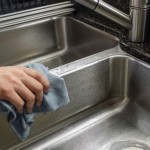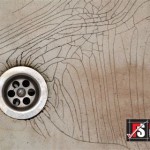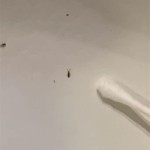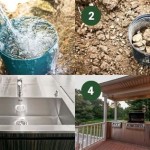Why Is My Dishwasher Draining Into My Sink?
The phenomenon of a dishwasher draining into the kitchen sink, instead of properly expelling wastewater through the designated drain line, is a common household plumbing issue. This occurrence can be unsettling and often indicates an underlying problem that requires prompt attention. Understanding the potential causes of this issue is crucial for efficient troubleshooting and repair. Ignoring this problem can lead to unsanitary conditions, potential water damage, and compromised dishwasher functionality.
The proper function of a dishwasher relies on a system designed to efficiently remove wastewater generated during the washing cycle. This system includes a drain hose, an air gap (in some installations), and connection to the plumbing drain line, often through the garbage disposal unit. When this system malfunctions, wastewater can back up into the sink, signaling a disruption in the intended flow. Several factors can contribute to this reversal, ranging from simple blockages to more complex plumbing issues.
The presence of wastewater in the sink after a dishwasher cycle suggests that the water is experiencing resistance or an obstruction in its intended path. This resistance forces the water to seek an alternative route, which often leads to the sink. Pinpointing the exact reason for this backflow is the first step towards resolving the issue and restoring the dishwasher's proper drainage functionality.
Clogged or Obstructed Drain Hose
One of the most frequent culprits behind a dishwasher draining into the sink is a clogged or obstructed drain hose. The drain hose is a flexible tube that carries wastewater from the dishwasher to the plumbing drain line, typically connected to the garbage disposal unit or a dedicated drain connection under the sink. Over time, this hose can accumulate food particles, grease, and other debris, leading to a partial or complete blockage.
The accumulation of debris restricts the flow of water, creating back pressure and ultimately forcing the wastewater to reverse its direction and flow into the sink. The severity of the obstruction can vary, ranging from minor constrictions that slow down drainage to complete blockages that prevent any wastewater from escaping the dishwasher.
Inspection of the drain hose is a critical step in diagnosing this problem. Disconnecting the hose from both the dishwasher and the drain connection allows for a thorough visual examination. Squeezing and manipulating the hose can reveal hard lumps or areas of significant blockage. Additionally, attempting to flush the hose with water can help identify the extent of the obstruction.
Removing the clog can often be achieved using a combination of methods. A long, flexible brush or a plumbing snake can be inserted into the hose to dislodge and remove debris. Alternatively, flushing the hose with high-pressure water can help dislodge stubborn blockages. In cases of severe or persistent clogging, replacing the drain hose may be the most effective solution.
Preventing future drain hose clogs involves good maintenance practices. Regularly scraping food particles from dishes before loading them into the dishwasher can significantly reduce the amount of debris entering the drain hose. Periodically flushing the dishwasher with a vinegar solution can also help dissolve grease and prevent the buildup of deposits within the hose.
Air Gap Malfunction or Obstruction
An air gap is a small, cylindrical device typically mounted on the sink countertop near the faucet. Its purpose is to prevent wastewater from the sink or garbage disposal from flowing back into the dishwasher, a process known as back-siphonage. This is achieved by creating a physical break in the drain line, allowing air to enter and prevent the reverse flow of water.
When an air gap becomes clogged or obstructed, it can disrupt the proper drainage of the dishwasher. Debris such as food particles, soap scum, and mineral deposits can accumulate within the air gap, restricting airflow and hindering its ability to prevent back-siphonage. Consequently, wastewater from the dishwasher may be forced back into the sink.
Inspecting the air gap for signs of blockage is essential. The cap of the air gap can be easily removed to reveal the internal components. Visual examination can often reveal accumulated debris. A small brush or pipe cleaner can be used to remove any visible obstructions.
Flushing the air gap with water can also help clear any remaining debris. Removing the drain hose connected to the air gap and running water through the device can dislodge stubborn blockages. In some cases, disassembling the air gap for a more thorough cleaning may be necessary.
Ensuring the proper installation of the air gap is crucial for its effective operation. The air gap should be positioned higher than the dishwasher's drain line to prevent back-siphonage. Additionally, the drain hoses connected to the air gap should be free of kinks or obstructions.
Maintaining a clean air gap is essential for preventing future blockages. Regularly wiping down the air gap with a damp cloth can remove surface debris. Periodically flushing the air gap with a vinegar solution can also help dissolve mineral deposits and prevent the buildup of obstructions.
Clogged or Malfunctioning Garbage Disposal
In many kitchens, the dishwasher drain hose is connected to the garbage disposal unit. The garbage disposal serves as a convenient receptacle for food scraps and a mechanism for grinding them into smaller particles before they enter the plumbing system. However, a clogged or malfunctioning garbage disposal can significantly impact the dishwasher's drainage ability.
When the garbage disposal is clogged, it creates a bottleneck in the drainage system, preventing wastewater from flowing freely. This obstruction can cause back pressure, forcing the dishwasher's wastewater to reverse its direction and flow into the sink. The clog can be caused by a variety of factors, including the disposal of inappropriate items, the accumulation of grease, or a mechanical malfunction within the unit.
Diagnosing a clogged garbage disposal involves checking for common signs. If the disposal is making unusual noises, failing to grind food properly, or emitting foul odors, it is likely clogged. Attempting to run the disposal may reveal the extent of the blockage.
Clearing a clogged garbage disposal often involves several steps. First, ensure that the disposal is turned off at the circuit breaker for safety. Then, use tongs or pliers to remove any visible debris from the disposal chamber. A mixture of baking soda and vinegar can be poured into the disposal to help dissolve grease and loosen obstructions.
Running cold water into the disposal while it is operating can help flush away any remaining debris. If the disposal continues to be clogged, a specialized garbage disposal wrench can be used to manually rotate the impeller and dislodge any stubborn obstructions.
A malfunctioning garbage disposal can also contribute to dishwasher drainage problems. A faulty motor, worn-out blades, or a broken impeller can impair the disposal's ability to grind food effectively, leading to clogs and back pressure. In such cases, repairing or replacing the garbage disposal may be necessary.
Preventing garbage disposal clogs involves proper usage and maintenance. Avoid disposing of fibrous foods, such as celery and corn husks, which can easily wrap around the impeller. Run cold water while operating the disposal to help solidify grease and prevent it from clinging to the blades. Periodically grind ice cubes in the disposal to help sharpen the blades and dislodge any accumulated debris.
Beyond these primary causes, other less frequent issues can contribute to a dishwasher draining into the sink. These can include a kinked or damaged drain hose, an improperly installed dishwasher, or a problem with the kitchen's plumbing system itself. A kinked drain hose restricts water flow, while an improperly installed dishwasher may not be properly aligned with the drain connection. Problems within the main plumbing line can also affect proper drainage and lead to backflow.
Addressing these issues may require specialized knowledge and tools. Consulting a qualified plumber may be necessary to diagnose and resolve complex plumbing problems. A plumber can assess the entire drainage system and identify any underlying issues that may be contributing to the dishwasher's drainage problems.
Thoroughly investigating and addressing the underlying cause of a dishwasher draining into the sink is essential for restoring its proper functionality and preventing potential water damage. While many of these issues can be resolved with simple troubleshooting and maintenance techniques, more complex problems may require professional assistance. Regular maintenance and careful usage can help prevent future occurrences and ensure the efficient operation of the dishwasher and kitchen plumbing system.

Dishwasher Draining Into Kitchen Sink Easy Diy Fix

Dishwasher Draining Into Kitchen Sink Easy Diy Fix Youtube

How To Prevent Sink Water From Draining Into My Dishwasher Quora

Why Is My Dishwasher Backing Up Into The Sink

Water Coming Out Of The Dishwasher Air Gap Misterfix It Com

Dishwasher Drains Structure Tech Home Inspections

Dishwasher Drains Water At Air Gap Easy Fix

Why Is My Dishwasher Backing Up Into The Sink Abc Blog

How To Prevent Sink Water From Draining Into Your Dishwasher

Dishwasher Water Backs Up In Sink Doityourself Com Community Forums







